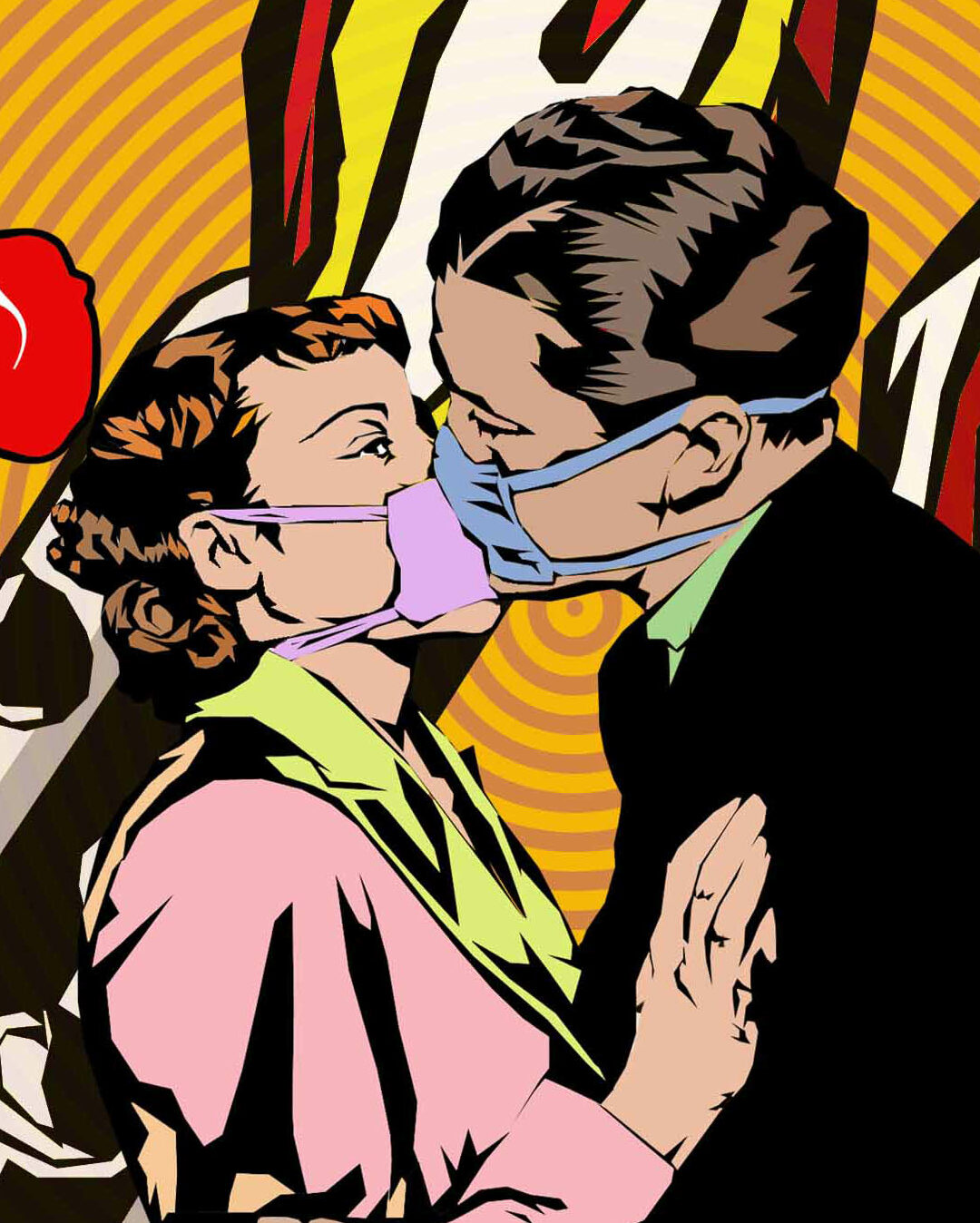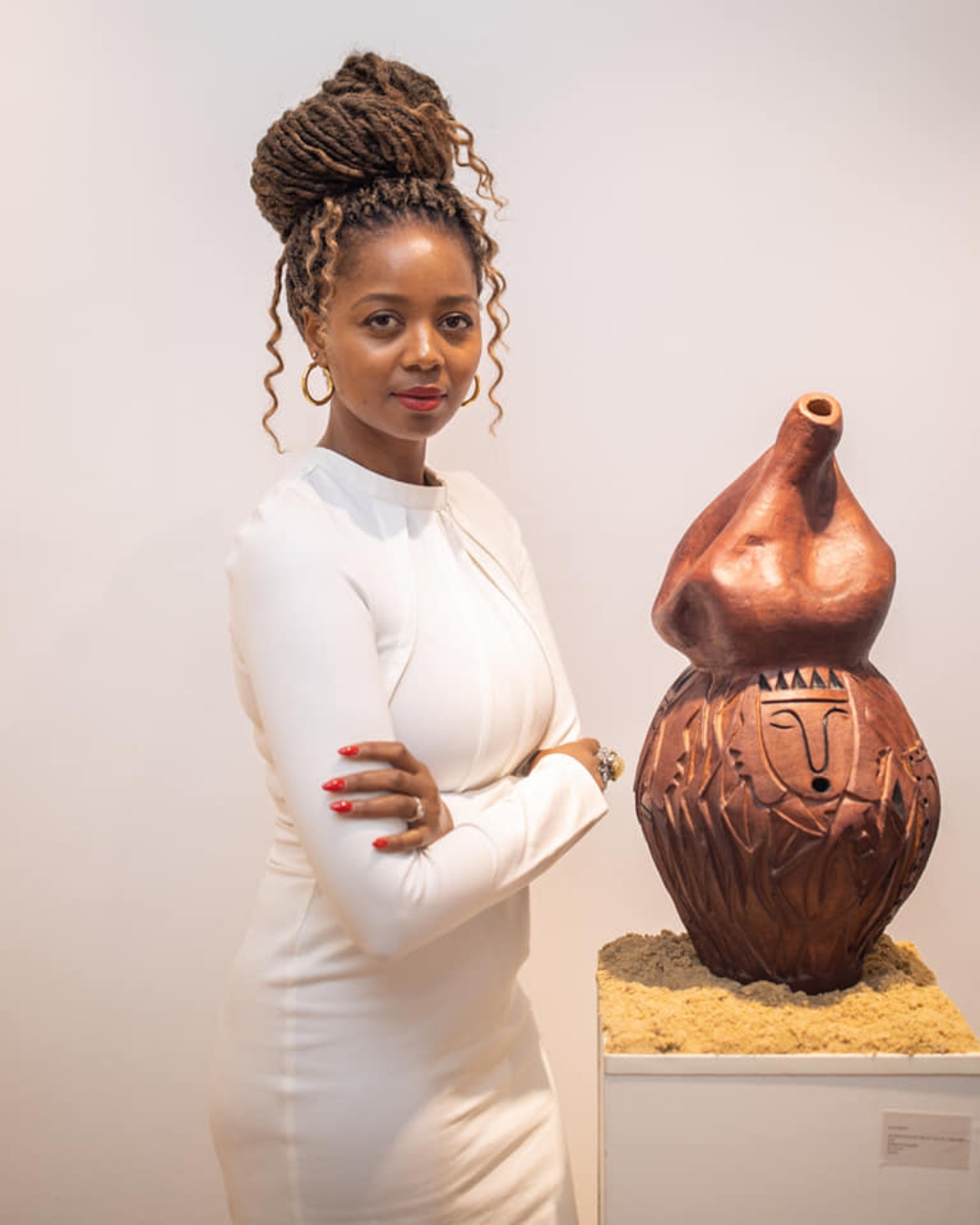Balmain, Louis Vuitton, Saint Laurent and Naomi Campbell reunite for an exceptional shoot in Lagos by a contemporary African artist
Prince Gaysi is a young Ghanaian visual artist renowned for his unique artistic identity. His work has been exhibited in Paris, London, Miami and Cape Town. His growing reputation has taken African culture beyond the continent’s borders to 54 countries. Based in Accra, he uses his art to depict marginalized and invisibilized people, and challenges beauty standards by creating portraits of black men and women. How did he develop his technique? Thanks to his cell phone.
His use of color and light gives his visuals a special character. Color is like “therapy, a way of treating depression and transforming emotions”, describes the artist. Recently, Prince Gaysi collaborated with Naomi Campbell on a shoot for the cover of Madame Figaro. Pieces from the Balmain, Saint Laurent and Louis Vuitton collections were photographed by the young artist in Lagos, Nigeria’s fashion capital. Naomi Campbell poses with Alpha Dia, a Senegalese model: a strong bias for the magazine. The opportunity to offer a new setting and bring an unconventional artistic touch to the fashion editorial exercise.
Will Madame Figaro’s audience be receptive to this burst of color? The question is asked. When these initiatives become commercial successes, then there’s no doubt about the sales potential of creativity made in Africa.
The idea is to seek out professionals based on the continent and to envisage bold, respectful collaborations. Luxury brands and renowned magazines maintain privileged relationships with photographers and models. The quest for new talent is part of a noble commitment to diversity and the need to renew storytelling.
In today’s digital environment, with its profusion of images, it’s essential to break out of the closed circle of regulars to offer content that makes a real impact. Africa is an ideal destination for recruiting new talent and integrating it into creative projects. It’s not about inspiration, it’s about collaboration, comparing perspectives and creating new horizons.
Social networks have become free, accessible exhibition spaces for promoting contemporary African art.
It’s important for artists to skilfully control the pace of their appearances, and to focus on collaborations that help establish their credibility. Some artists prefer to remain within the confines of museums and art exhibitions. Others take advantage of the advent of social networks to nurture a new kind of relationship with art lovers. They share their latest work directly on Instagram, they create live performances, they exchange directly online with potential buyers and enthusiasts.
Is it possible to preserve the luxurious nature of your art when you publish it on social networks?
Fred Ebami, a French-Cameroonian visual artist, developed his reputation online through exhibitions in prestigious venues. He quickly became a reference for digital pop art and contemporary African art. Gaining international recognition with works listed by the Monte Carlo auction house, he navigates freely between the institutional world of museums and Instagram, where he regularly unveils original and exclusive works. A feed like an exhibition space. Fred Ebami hijacks pop culture objects and images to get his message across. He creates a genuine space for ongoing discussion, tackling social issues and paying tribute to freedom fighters such as Nelson Mandela.
His choice of colors is reminiscent of superhero comics. Visuals that make a lasting impression, that you want to save and share. For several years now, he has been reacting to current events through design, while always striving to make his art accessible. Fred Ebami doesn’t like the idea of being specifically referenced as a contemporary African artist, but he is aware that this label can move lines and offer opportunities to his peers from the continent.
So, he uses this label to propose his vision of the world and challenge preconceptions and received ideas. It’s a way of exploring the complexity of those he sees as icons of modern times, with their successes and weaknesses. From John Fitzgerald Kennedy to Kanye West, his art crosses time and invites us to revisit our history lessons from an African perspective. He portrays emblematic figures with an unexpected modernity. On his Instagram account, for example, we can find representations of Thomas Sankara, one of the founding fathers of pan-African ideology, and Denis Mukwege, the gynecologist awarded the Nobel Peace Prize in 2018 for his work with women raped during the war in the Congo.
In 2012, Fred Ebami unveiled a piece entitled “The Kiss”, inspired by Roy Lichtenstein and depicting the kiss of two masked lovers. A surprising echo of recent events. The vivid color codes that characterize his style lend lightness to powerful messages. Social networks contribute to the democratization of luxury. The close bond created with the online community is real, but make no mistake: a hierarchy of artists and works remains, maintained by art dealers and collectors who want the value of their holdings to continue to rise.
The role of art dealers in the growing exposure of contemporary African artists
Among the key players in the promotion of African art, it is essential to mention the role of gallery owners, event organizers and art dealers. The art business is organized in a closed circle, with authorities defining the rules. These authorities are often Western, and art from the African continent has not always found its place in the hierarchy of world-renowned works. Each exhibition is an outstretched arm towards the next. Some works travel around the world and are not intended to be sold; they belong to a country’s cultural heritage. These pieces are off the market, a form of ultimate, inaccessible luxury. The buyers of some of the rarest works never reveal their identity. This is an essential feature of the art trade, which is considered a genuine financial investment. The intermediaries between artists and collectors are code-passers. They help maintain the prestige of the artists and the preciousness of their works.
Nomaza Nongqunga Coupez has taken the bold step of promoting contemporary African art in France with her Undiscovered Canvas platform. This South African-born businesswoman, based in Nice, tells compelling art stories in the form of video reports, articles published on her website and exhibitions in renowned venues on the French Riviera. The sudden halt in exhibitions due to the health crisis was an opportunity to change her business model. The company decided to create an online boutique selling limited editions at accessible, advertised prices. These unique capsules were created by her most highly-rated protégés from South Africa and Nigeria. Cultivating exclusivity while facilitating accessibility is the art of online luxury sales.
While the culture of price secrecy has always been nurtured by art market players, his online boutique stands out for its refreshing transparency. Unique pieces can be found for under €500, as well as a selection of more expensive paintings. Nomaza Nongqunga Coupez identified a target group of first-time collectors eager to support artists and acquire original pieces as decorative objects. They were the first consumers of this exclusive drop. She was surprised to find that more experienced collectors were also willing to consume art online. As a result, she was able to sell original pieces worth several thousand euros via her site. Her meticulous selection of artists and pieces is recognized by her peers. The development of partnerships with galleries in New York and London has enabled her to expand her network of collectors.
The recent period has been conducive to the search for new forms of collaboration and the sharing of address books between art dealers. The absence of physical sales opportunities has had an impact on art prices. The costs of organizing exhibitions and participating in fairs have disappeared. Commissions fell. Collectors have seized this opportunity to do business. Digitizing the sale of contemporary African art seems to be the way of the future if we are to shine on the continent and beyond its borders.
Art is a witness to history, preciously guarded, sometimes hidden, always coveted. It is a marker of identity. In 2020, a law was passed in France concerning the restitution of African cultural property to the Republic of Benin and the Republic of Senegal. Other European countries have already begun the process of returning African artworks to their countries of origin. This political initiative opens up the possibility of organizing exclusive exhibitions on the African continent, retracing a little-known African history.
Read also





